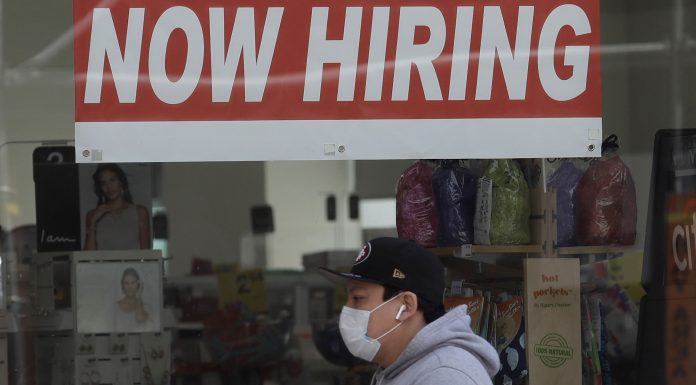(Jon Wolfenbarger, Mises Institute) The Biden administration, the Fed, and Wall Street all cheered the July employment report on Friday, which stated that total nonfarm payrolls rose by 943,000—8.4 percent better than expectations of 870,000—and the unemployment rate fell 0.5 percent to 5.4 percent in July. They also upwardly revised the prior two months by 119,000 jobs.
Rising employment is certainly good news for the economy and living standards, but there is much more to this story that is concerning for the economy.
In this article, we will make these five key points about the current employment situation:
- Employment is a lagging economic indicator, so it is not particularly useful in determining the future direction of the economy or financial markets.
- Money supply growth drives the business cycle and employment.
- Money supply and employment growth are both slowing now.
- Overall employment levels remain very weak and are still in recessionary territory.
- Federal unemployment benefits have been subsidizing unemployment, but that will change next month.
Employment Lags, Money Supply Leads
Employment growth is a lagging economic indicator, as it usually bottoms after a recession has ended. Money supply growth is a leading economic indicator (and actually drives the business cycle), as it usually bottoms before a recession begins.
As Murray N. Rothbard stated in The Mystery of Banking:
For every business cycle is marked, and even ignited, by inflationary expansions of bank credit … bank credit expansion raises prices and causes a seeming boom situation, but a boom based on a hidden fraudulent tax on the late receivers of money. The greater the inflation, the more the banks will be sitting ducks, and the more likely will there be a subsequent credit contraction touching off liquidation of credit and investments, bankruptcies, and deflationary price declines.
…
Job openings are at record highs of 9.2 million, which is over 30 percent higher than in February 2020.
Why are job openings so high? There are many reasons relating to the covid panic, including structural job shifts resulting in mismatched skills for many workers, schools not reopening, which requires many parents to stay home to take care of their children, as well as many people still being afraid to work around others due to covid fears.
However, if it were not for more generous unemployment benefits, many people would have to get back to work to pay their bills. Due to covid, the federal government is providing an additional $300 per week in additional unemployment benefits paid on top of regular state unemployment benefits. The federal government also provides benefits for self-employed workers, freelancers, and independent contractors, who do not qualify for state unemployment benefits. As with any subsidy, this leads to more of what is being subsidized, which in this case is unemployment.
…
It has been estimated that people who were previously earning less than $34,000 annually would make more money by collecting unemployment benefits than by going back to work.
That is nearly 50 percent of the workforce!
These federal unemployment benefits expire in early September, so we will likely see a surge of people returning to work after that.
But in the meantime, these unemployment subsidies have lowered living standards for all Americans, not only due to the taxes, money printing, and borrowing the government has undertaken to pay for them, but also due to the fewer goods and services that have been produced as a result of millions of people not returning to work.



